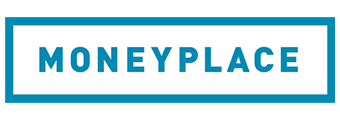
- Secured personal loans require collateral and typically offer lower interest rates and higher loan amounts, but pose the risk of asset loss if the borrower defaults.
- Unsecured personal loans do not require collateral, providing faster approval and more flexibility, but come with higher interest rates and are heavily influenced by the borrower's credit score.
-
Secured loans could be more suited for large expenses like home renovations or vehicle purchases, while unsecured loans are better suited for smaller, immediate financial needs.
-
Choosing between secured and unsecured loans depends on factors like the loan purpose, availability of collateral, credit score, repayment capacity, and risk tolerance.
When considering a personal loan in Australia, borrowers often face the choice between secured and unsecured loans. Understanding the differences between these two types of loans, their features, and the associated interest rates is crucial in making an informed decision.
Essentially, a secured loan requires collateral to use against the loan in case of default. If you default - i.e. stop making payments on the loan - the lender can take your collateral away. This is usually a car, but can be a home, jewellery, or a term deposit. On the other hand, an unsecured loan doesn’t require any collateral - just a lender’s belief that you’ll pay it back on time.
Both secured and unsecured personal loans have their advantages and disadvantages. Secured loans can offer lower interest rates and higher loan amounts but come with the risk of losing collateral, and are potentially less flexible. Unsecured loans provide flexibility without the need to borrow against a prized asset, but at higher interest rates and stricter credit requirements.
By understanding the differences and considering your financial situation, you can choose the loan type that best suits your needs and ensures a manageable repayment process. This article will explore the key distinctions, features, and interest rates of secured and unsecured personal loans, providing guidance on how to choose the right option for your needs.
Secured Personal Loans Explained
A secured personal loan requires the borrower to provide an asset as collateral. This asset could be a car, property, or any valuable possession. The lender holds a legal claim over the collateral until the loan is fully repaid. In case the borrower defaults, the lender can seize and sell the asset to recover the outstanding amount.
Secured Personal Loan Features
-
Lower Interest Rates: Due to the lower risk for lenders, secured loans typically offer lower interest rates compared to unsecured loans, often a few percentage points lower than an equivalent unsecured loan.
-
Higher Loan Amounts: Borrowers can usually access higher loan amounts as the loan is backed by collateral.
-
Longer Repayment Terms: Secured loans often come with longer repayment periods, making monthly repayments more manageable.
-
Restrictions on Assets: If you are borrowing for a car, or using a car as security, the lender will typically require the car be a certain age i.e. new or lightly used, have comprehensive insurance, and be registered and roadworthy. Many also want you to buy the car from a dealer, not privately. Other asset restrictions may also apply.
-
May Need a Deposit: Because the asset will be valued, if the valuation comes up shorter than the asking price for say a vehicle or other asset, you may need to stump up some of your own cash to complete the purchase.
-
Risk of Asset Loss: The primary risk for the borrower is the potential loss of the collateral if they fails to repay the loan.
Compare Secured Personal Loan Rates
| Fixed | Secured | N/A | More details | ||||||||||
Personal Loan Secured (5 Years) | |||||||||||||
| Fixed | Secured | N/A | More details | ||||||||||
Used Car Loan (Excellent Credit) (5 Years) | |||||||||||||
| Fixed | Secured | N/A | More details | ||||||||||
IMB Secured Personal Loan (5 Years) | |||||||||||||
| Fixed | Secured | N/A | N/A | More details | |||||||||
Unsecured Green Personal Loan (5 Years) | |||||||||||||
| Fixed | Secured | N/A | More details | ||||||||||
Secured Personal Loan (5 Years) | |||||||||||||
| Fixed | Secured | N/A | More details | ||||||||||
Low Rate Car and Personal Loan - Fixed (5 Years) | |||||||||||||
Unsecured Personal Loans Explained
In contrast, an unsecured personal loan does not require any collateral. Instead, the loan approval is based on the borrower’s creditworthiness, income, and financial history. Since the lender has no asset to claim if the borrower defaults, unsecured loans are considered riskier for lenders. If you default on the loan, they may attempt to recoup any losses through the judicial system.
Unsecured Personal Loan Features
-
Higher Interest Rates: Without collateral, lenders charge higher interest rates to compensate for the increased risk. Rates are typically a few percentage points higher than secured loans, and often more than double for borrowers with poor credit scores.
-
Faster Approval: The approval process is generally quicker since there’s no need to evaluate the value of collateral.
-
Flexible Use: Unsecured loans offer more flexibility in terms of how the funds can be used, whether that’s for a wedding, optional medical surgery, a holiday, home renovation, or other big expense.
-
Credit Score Dependent: Approval and interest rates are heavily influenced by the borrower’s credit score and financial stability. Lenders typically offered tiered interest rates, with much higher rates for those with low credit.
-
Restrictions on Borrower: As there are no assets to secure the loan against, a lender might be more strict as to whom they lend. This may preclude self employed or casual workers, and demand stable, higher-paying employment, with employees passing probation.
Compare Unsecured Personal Loan Rates
| Fixed | Secured | N/A | More details | ||||||||||
Personal Loan Secured (5 Years) | |||||||||||||
| Fixed | Secured | N/A | More details | ||||||||||
Used Car Loan (Excellent Credit) (5 Years) | |||||||||||||
| Fixed | Secured | N/A | More details | ||||||||||
IMB Secured Personal Loan (5 Years) | |||||||||||||
| Fixed | Secured | N/A | N/A | More details | |||||||||
Unsecured Green Personal Loan (5 Years) | |||||||||||||
| Fixed | Secured | N/A | More details | ||||||||||
Secured Personal Loan (5 Years) | |||||||||||||
| Fixed | Secured | N/A | More details | ||||||||||
Low Rate Car and Personal Loan - Fixed (5 Years) | |||||||||||||
Secured vs Unsecured Personal Loans: How to Choose
When deciding between a secured and unsecured personal loan, consider the following factors:
Purpose of the Loan
Determine the purpose of the loan and whether you need a large sum of money. Secured loans might be more ideal for substantial expenses, such as home renovations or purchasing a vehicle, while unsecured loans are suitable for smaller, immediate needs. If you want more flexibility with how you use the loan, unsecured may be a better fit, at the expense of a likely higher interest rate.
Collateral Availability
Assess if you have an asset to offer as collateral. If you do not have any collateral or are unwilling to risk your assets, an unsecured loan could be the better option.
Credit Score & Borrower Profile
Review your credit score and financial history. If you have a strong credit profile, you may qualify for favourable terms on both loan types. Conversely, if you don’t have stable long-term employment, you may struggle to get favourable terms on an unsecured loan, and may need to have an asset to use as security to improve your chances of being approved or attaining a lower interest rate.
Repayment Capacity
Consider your ability to repay the loan. Secured loans often have lower monthly repayments due to lower interest rates and longer terms, making them more affordable. However, if your funding needs are shorter-term, you may be able to avoid a lot of the interest rate burden of an unsecured loan, and favour the faster approval times and flexibility.
Risk Tolerance
Evaluate your risk tolerance. If you’re uncomfortable with the possibility of losing your collateral, an unsecured loan could be the safer choice, at the expense of a higher interest rate.
Photo by senivpetro on Freepik






